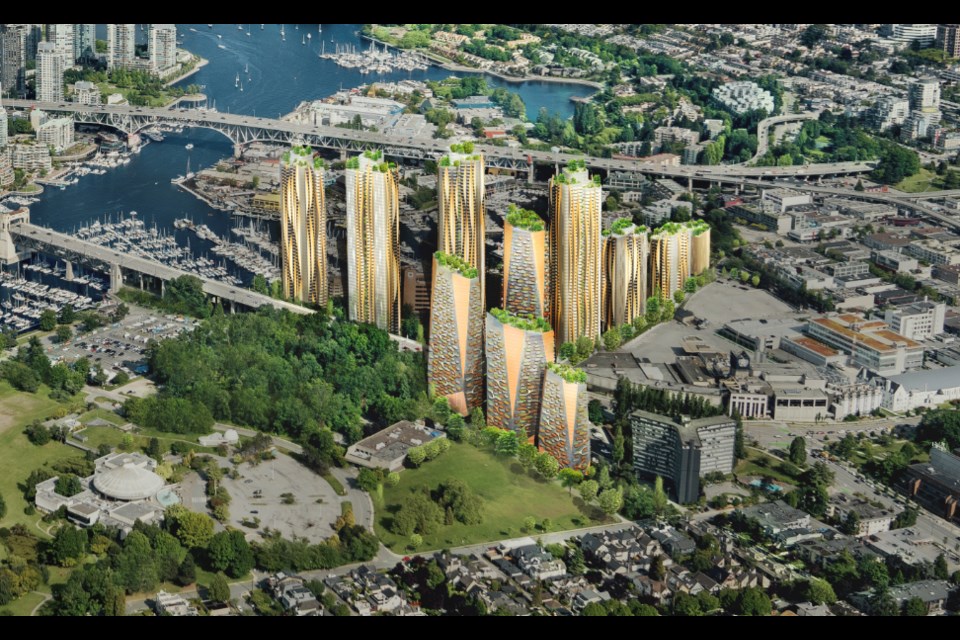British Columbia and Vancouver homebuilders scored some surprising successes over the past five years, according to this week’s release of housing data from the 2021 census.
The data, including information related to ownership, affordability and construction, show the housing stock in B.C. and Vancouver made significant strides towards renewal between 2016 and 2021.
Dwelling counts grew faster than the national average, rising 9 per cent in Metro Vancouver and 8 per cent in B.C. as a whole, compared to just 6 per cent nationally. The strongest growth was in rental units, with 13 per cent growth in Metro Vancouver and 12 per cent growth province-wide as ownership rates slipped.
The biggest shift in the provision of housing was in Indigenous communities. Band housing increased a stunning 287 per cent in Metro Vancouver and 156 per cent in B.C. versus 23 per cent in Canada as a whole.
The success of band housing reflects agreements that have returned control of significant parcels of land to First Nations, according to Ron Rapp, CEO of the Homebuilders Association Vancouver (HAVAN).
While not yet built, the 10.5-acre tract at the south foot of the Burrard Street bridge Squamish Nation is developing in partnership with Westbank Corp. is an example.
Squamish members approved plans in 2019 to build up to 6,000 units on the site, known as Sen̓áḵw, including 300 non-market units for band members. A servicing agreement was signed this year, and preliminary site work has begun.
Rapp says the project has proceeded extremely quickly relative to projects in neighbouring Vancouver.
“If this was going the normal stream of events, we’d still be talking about it for the next three or four years,” he says. “It’s not subject to the same kind of constraints that major development projects have within the auspices of various municipal jurisdictions.”
Despite the hurdles presented by the approvals process, B.C.’s housing stock is being renewed more rapidly than elsewhere in Canada.
Between 2016 and 2021, the housing stock grew by 10.5 per cent in Metro Vancouver and 9.1 per cent province-wide compared to a 7 per cent gain nationally. Moreover, both Metro Vancouver and B.C. posted sharp declines in older housing, as the proportion of the housing stock built before 2000 dropped seven percentage points. This compared to a decline of just five percentage points nationally.
The net result is that B.C. is home to better-quality housing than in Canada as a whole. Census data indicates that just 5.8 per cent of B.C. homes are in need of major repairs versus 6.1 per cent nationally.
However, a far greater proportion of homes in B.C. remain classed as “unsuitable.” The problem is particularly acute in Metro Vancouver, where more than 8 per cent of households report being in unsuitable units.
But the city of Vancouver made significant progress against unsuitable housing in the latest five years, with the portion falling to 7.8 per cent of the housing stock while Canada as a whole saw the proportion increase by half a percentage point to 5.4 per cent.
There is still plenty of work to do, however.
A report earlier this year by CMHC indicated that B.C. would require an additional 570,000 homes by 2030 to keep pace with the demand for affordable housing. Private developer Wesgroup estimated that approximately 523,000 of those are needed in Metro Vancouver alone.
Reports by HAVAN have found a similar shortfall. In 2020, for example, just the city of North Vancouver had met its growth targets for housing development.
“We’re constantly playing catch up,” Rapp said. “Despite the fact that there has been some major increase in housing stock in the Metro Vancouver area overall … we still have a significant structural deficit when it comes to meeting the housing supply.”
CMHC forecasts housing starts in Metro Vancouver to total between 22,000 and 26,000 in 2022. There have been 15,645 starts through the end of August.



